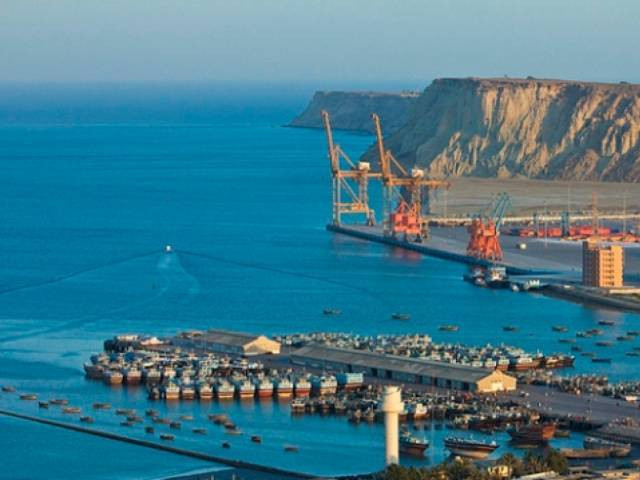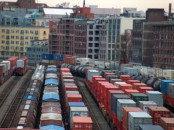Part 1: An introduction into CPEC's long-term plan and challenges
Plan covers details of all routes, also points to the bottlenecks

Plan covers details of all routes, also points to the bottlenecks. PHOTO: REUTERS
A look at the draft of the long-term plan (LTP) 2016-30 gives an impression that Prime Minister Nawaz Sharif has truly called the CPEC a fate changer for the country. The plan has been framed by China, which is yet another reason to believe that it will not remain a pipedream.
CPEC should not become a boulevard of broken dreams
In a series of articles, The Express Tribune will highlight Chinese approach to the CPEC revealed in the LTP draft. However, the document could be revised as it is currently being negotiated.
According to the draft, the economic corridor will boost Pakistan’s national output by 1.5% from 2016 to 2020 and by another 1% from 2020 to 2030.
From 2016 to 2020, trade between China and Pakistan will grow 24% and bilateral direct investment will rise 25%. Industrial value addition should exceed 1.5% and 500,000 to 800,000 new jobs will be created.
The length of newly built or upgraded roads and railways should reach 3,871 km and 1,529.7 km respectively. The electricity generated by newly built sources will reach 19.785 million kilowatts and the length of optical fibre cable will stretch to 2,084 km.
However, these outcomes depend on successful implementation of the CPEC strategic framework. Political wrangling over the CPEC by both ruling and opposition parties may deprive the country of the benefits of industrialisation and orderly urbanisation – the two key objectives of the long-term plan.
Major questions about CPEC answered
“International, interwoven domestic, ethnic and religious factors might give rise to terrorist activities and affect the secure environment for corridor construction,” note Chinese planners. They say global powers shifting their focus to this region might create uncertain influence.
Scope of the corridor
The National Development and Reform Commission (NDRC) and China Development Bank (CDB) have designed the draft plan, which highlights the scope of the corridor and may address concerns over the western route.
The CPEC spans the Xinjiang Uygur autonomous region and the entire Pakistan in the spatial range. The corridor is divided into a core area and a radiation area, which indicates the levels, range and layout of the construction and development.
“The core area includes Kashgar, Tumshuq, Atushi and Akto of Kizilsu Kirghiz of Xinjiang, and Corps Tumshuq, most of Islamabad capital territory, Punjab and Sindh, and some areas of Gilgit-Baltistan, Khyber-Pakhtunkhwa and Balochistan,” says the draft report.
The radiation area includes areas other than the core ones within the spatial scope of the CPEC. Most of Balochistan and Khyber-Pakhtunkhwa fall in the radiation area.
However, Pakistan suggests that the corridor’s core area may be extended on the Chinese side up to Khorgos on the China-Kazakhstan border and add an appropriate direct connectivity between Kashgar and Khorgos as a priority project in the short term.
Pakistan’s access to Russia and Europe through China and Kazakhstan would have far-reaching positive geo-economic impact.
Corridor routes
Chinese authorities have explained in detail the CPEC routes passing through Pakistan, which they describe as “one belt, three passages, two axes and five functional zones”.
CPEC: Perils ahead for Pakistan
One belt refers to the strip to be formed by an important arterial traffic route in China and Pakistan, which lies in the core area of the corridor. This northeast-southwest strip starts from Kashgar, passes through Taxkorgan, Khunjerab Pass, Islamabad and Lahore, and ends in Sukkur where it is divided into two routes heading to Karachi and Gwadar on the Arabian seacoast.
One belt will cover a cluster of industries, population and cities.
Three passages refer to the east, central and west traffic passages in the core area from Islamabad to Karachi and Gwadar, each of which consists of several trunk railways and highways. The east passage consists of the railway-highway network from Islamabad to Karachi, via Lahore, Faisalabad, Multan, Sukkur and Hyderabad, and is the main traffic artery of the corridor.
The central passage starts from Islamabad in the north and reaches Karachi, via Daria Khan, Jacobabad and Khuzdar through N25 highway, or reaches Gwadar through M8 motorway. The construction of this passage has not been entirely completed and some sections are in the planning and construction phase.
The west passage starts from Islamabad in the north and reaches Gwadar, via DI Khan, Quetta, Basima and Hoshab.
Impediments
However, the Chinese caution that construction of the corridor may be disrupted by domestic and regional challenges.
The corridor construction and its operation also face constraints from physical geographical factors. South Xinjiang is far from China’s main production and consumption centres. Its industrial base is weak and the size of its economy is limited.
Special natural geographical conditions of border areas of the two countries will increase the costs of infrastructure construction, operation and management, according to the draft report.
Areas along the Indus River within Pakistan are relatively economically developed, but have limited resource-carrying capacity due to high population density. The western part of Pakistan is underdeveloped with poor natural conditions.
Pakistan’s economic recovery and development foundation is weak, according to Chinese experts. There are major bottlenecks restricting economic and social development.
Energy shortage, obsolete infrastructure, low efficiency of administration, unbalanced regional economic and social development, high risks of exchange rate and capital control, all pose potential challenges to the corridor construction.
The writer is a staff correspondent
Published in The Express Tribune, October 24th, 2016.
Like Business on Facebook, follow @TribuneBiz on Twitter to stay informed and join in the conversation.



















COMMENTS
Comments are moderated and generally will be posted if they are on-topic and not abusive.
For more information, please see our Comments FAQ